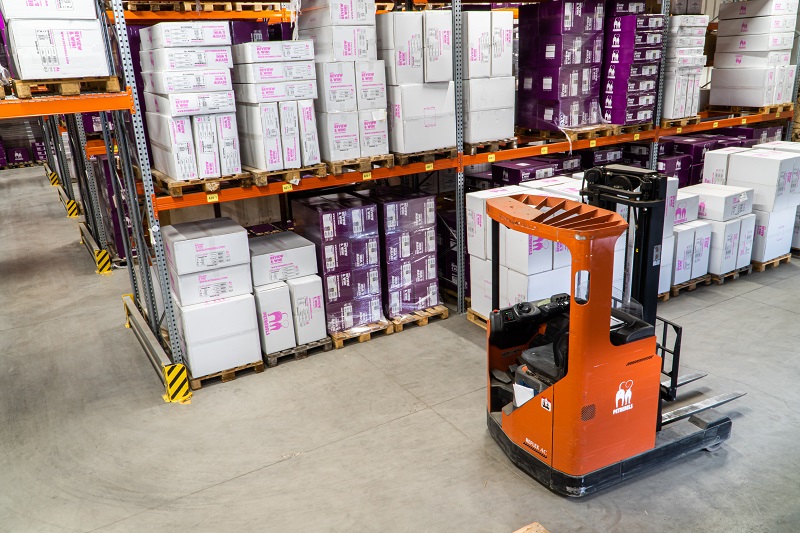Are you running a business and getting a little bit confused about how to calculate different types of profit? One important component in the profit equation is the Cost of goods sold (COGS). So what is this term and how to calculate it? In this article, you will learn its definition as well as how to arrive at the correct final number
Table of Contents
What is the Cost of Goods Sold?
Definition
The cost of goods sold (COGS) is referred to as any direct cost associated with the production of goods that you sell (materials to create the goods and direct labor). In other words, it excludes indirect expenses, such as marketing, distribution costs, or salesforce costs.

What is the Cost of Goods sold (COGS)?
The cost of goods sold can only be used by enterprises that make products (including digital ones); service sectors utilize the term “cost of revenue”.
COGS is an irreplaceable part of a financial statement as it is used to determine gross profit by being subtracted it from a company’s revenues. As we all know, gross profit is an extremely important factor to measure one company’s performance.
You should remember that if the cost of items sold during the reporting period exceeds the revenue generated by the company, there is no profit.
Formula
Calculating COGS is pretty simple. Below is the standard formula:
| Cost of Goods Sold = Beginning Inventory + Purchases – Ending Inventory |
In which:
- Beginning inventory: Amount of inventory leftover from the previous period (e.g., month, quarter, etc.)
- Purchases during the period: Cost of what you bought during the accounting period
- Ending inventory: Inventory you still have in stock during the period
Now you may be wondering how to arrive at the component indicators to count COGS. We will show you in just one minute, but before that, let’s dive into some methods frequently used to calculate the indicator.
Different methods of calculating Cost of Goods Sold
Although the cost of goods sold is an important metric, there is not just one single way to calculate it. Instead, the value will vary depending on the inventory costing method used by a company.
There are mainly three methods that a corporation can choose from to record the level of inventory sold during a period: First In, First Out (FIFO), Last In, First Out (LIFO), and the Average Cost Method. For high-ticket or one-of-a-kind objects, the Special Identification Method is used.
First In, First Out (FIFO)
In this method, the earliest goods to be purchased or created are sold first. Moreover, as prices are subject to an upward change over time, using the FIFO technique means that a company will sell its least expensive products first.
As a result, its COGS will be lower than the one recorded under LIFO. This also means the net income using the FIFO method grows with time.
Last In, First Out (LIFO)
In contrast to the previous method, now The most recent items added to the inventory are the first to be sold. When prices increase, higher-cost commodities are sold first, resulting in a larger COGS amount. The net income tends to diminish over time.
Average Cost Method
To value the products sold, the average price of all the goods in stock is applied, regardless of purchase date. Taking the average product cost over a period of time smooths out COGS, preventing it from being negatively impacted by one or more acquisitions or purchases.
Special Identification Method
To calculate the ending inventory and COGS for each period of unique things, such as vehicles, real estate, and rare and valuable diamonds., the special identification method employs the particular cost of each unit of merchandise (also known as inventory or goods).
This strategy allows a company to know exactly which item was sold and at what price.
A step-by-step guide to calculating Cost of Goods Sold
#1: Identify Direct and Indirect Costs
To avoid miscalculation, it is important to list all costs, including the cost of labor, cost of materials and supplies, and other costs.
COGS includes two types of costs:
- Direct Costs – expenses related to the production or purchase of the product.
- Indirect Costs – expenses related to warehousing, facilities, equipment, and labor.
#2: Determine Facilities Costs
This is where the confusion comes in. In this step, you need a good tax professional who is experienced in setting a percentage of your facility costs (rent or mortgage interest, utilities,…) to each product, for the accounting period you are in.
#3: Determine the Beginning Inventory
Merchandise in stock, raw materials, work in progress, finished products, and supplies that are part of the items you sell are counted in inventory.
The inventory value at the beginning of this year must be identical to the figures at the end of last year. Otherwise, an explanation on your tax form for the difference is required.

#4: Include Purchases of Inventory Items
Every business likely adds inventory during the year. You need to keep records of every change to your inventory, such as the costs of each shipment or the total manufacturing cost of each product you add to inventory, the invoices, and other paperwork.
For the products you make, a tax professional will help with determining the cost to add to inventory.
#5: Determine the Ending Inventory
Ending inventory costs are usually determined by taking a physical inventory of products, or by estimating.
Ending inventory costs can be reduced when the inventory suffers from damage or loss. Whether it is destroyed, lost, or out of date, you must show evidence or report to explain the case.
#6: It’s time for some final math
Now you have all the components you need to calculate COGS. Additionally, you can do it on a spreadsheet or by a tax professional.
Example
| Your business has a beginning inventory of $20,000. Your purchases total up to $8,000 for the period. And, your ending inventory is $6,000. Therefore, you can find the total COGS for that period using the cost of goods sold calculation.
COGS = Beginning Inventory + Purchases During the Period – Ending Inventory The calculator goes like this: COGS = $20,000 + $8,000 – $6,000 Your cost of goods sold for the quarter is $22,000. |
Some FAQs about Cost of Goods Sold
How important is the Cost of Goods Sold?
You can use COGS to calculate the Gross Profit of a company, which is consequently considered as one of the key performance tracking metrics of that business.
Moreover, COGS shows the operational costs that help in producing goods.
Are Salaries Included in Cost of Goods Sold?
No. COGS does not include salaries and other general and administrative expenses. However, there are certain types of labor costs that can be included in COGS, as long as they are directly associated with specific sales.
What is the limitation of the Cost of Goods Sold?
You can manipulate COGS by dishonest accountants or managers. It can be altered by:
- Allocating to inventory higher manufacturing overhead costs than those incurred
- Overstating discounts
- Overstating returns to suppliers
- Changing the amount of inventory in stock at the end of an accounting period
- Overvaluing inventory on hand
- Failing to write off obsolete inventory
When inventory is manipulated, COGS will be lower than in reality, which will lead to a higher gross profit margin.
WRAPPING UP!
We’ve guided you through some essential knowledge when it comes to the Cost of Goods Sold. Although the formula is pretty simple, the tracking process may be a bit tricky and require great care to detail.
We hope this article will help you be more confident to calculate the COGS for your business. However, if things get too complicated, don’t hesitate to consult a professional!
 socialhead
socialhead





